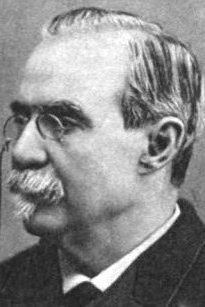1–15 February 1891 1893 → 1874 1872 83 seats 268 seats Start date February 1, 1891 | Registered 4,800,000–4,805,000 1872 1880 268 seats 12 seats | |
 | ||
Winner Antonio Cánovas | ||
The 1891 Spanish general election was held on Sunday, 1 February and on Sunday, 15 February 1891, to elect the 5th Restoration Cortes of the Kingdom of Spain. All 401 seats in the Congress of Deputies were up for election, as well as 180 of 360 seats in the Senate.
Contents
Overview
The Spanish legislature, the Cortes, was composed of two chambers at the time of the 1891 election:
This was a nearly perfect bicameral system, with the two chambers established as "co-legislative bodies". Both chambers had legislative, control and budgetary functions, sharing equal powers except for laws on contributions or public credit, where the Congress had preeminence.
The Spanish Constitution of 1876 enshrined Spain as a constitutional monarchy, awarding the King power to name senators and to revoke laws, as well as the title of commander-in-chief of the army. The King would also play a key role in the system of the turno pacífico (Spanish for "Peaceful Turn") by appointing and toppling governments and allowing the opposition to take power. Under this system, the Conservative and Liberal parties alternated in power by means of election rigging, which they achieved through the encasillado, using the links between the Ministry of the Interior, the provincial civil governors, and the local bosses (caciques) to ensure victory and exclude minor parties from the power sharing.
Electoral system
The approval of a new electoral law in 1890 reinstated universal suffrage in Spain, definitely replacing censitary suffrage in all forthcoming elections and extending the right of voting from about 5% of the population to nearly 25%. Other changes included a simplification of the electoral process as well as the removal of cumulative voting.
For the Congress of Deputies, 84 seats were allocated to 26 multi-member constituencies and awarded using a partial block voting, with the remaining 317 awarded under a first-past-the-post system in single-member districts. Instead of voting for parties, electors would vote for individual candidates. In districts electing more than one seat and up to four, electors could vote for one less candidate than seats to be filled; in those with more than four seats and up to eight, for up to two less; and for up to three less in multi-member constituencies electing eight seats or more. Candidates winning a plurality of votes in each constituency were elected. The overall number of seats was determined by the population count, with one seat per each 50,000 inhabitants. Voting was on the basis of universal manhood suffrage, with males over twenty-five and at least a two-year residency in a municipality entitled to vote. Concurrently, secular males at least twenty-five years old and in the full enjoyment of all civil rights were eligible for the Congress.
The Senate was not a directly elected body, with its 360 members being divided into three different classes:
The Constitution of 1876 provided for 180 elective senators and an equal number of senators for the other two classes combined. Elective senators served terms of ten years each, with their terms staggered so that approximately one-half of these seats were up for appointment every five years. The King could dissolve the entirety of the elective section of the Senate at will, triggering the appointment of the full contingent of elective senators.
